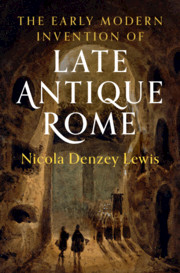
- Cited by 4
-
Cited byCrossref Citations
This Book has been cited by the following publications. This list is generated based on data provided by Crossref.
Litaker, Noria 2020. Lost in Translation? Constructing Ancient Roman Martyrs in Baroque Bavaria. Church History, Vol. 89, Issue. 4, p. 801.
2021. Books Received. The Journal of Ecclesiastical History, Vol. 72, Issue. 2, p. 465.
2021. September 2021 Books Received. Church History, Vol. 90, Issue. 3, p. 746.
Christ, Martin and González Gutiérrez, Carmen 2022. Introduction: death and the city in premodern Europe. Mortality, Vol. 27, Issue. 2, p. 129.
- Publisher:
- Cambridge University Press
- Online publication date:
- August 2020
- Print publication year:
- 2020
- Online ISBN:
- 9781108646826




